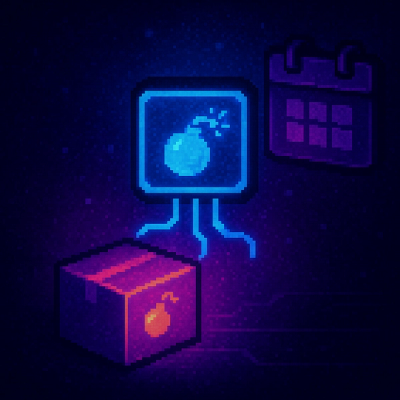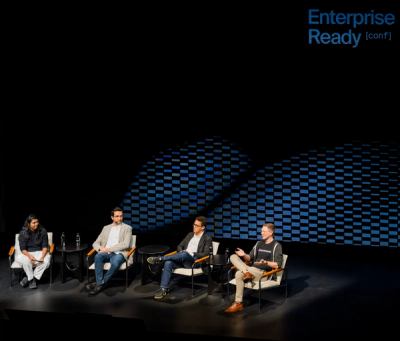
Security News
OWASP 2025 Top 10 Adds Software Supply Chain Failures, Ranked Top Community Concern
OWASP’s 2025 Top 10 introduces Software Supply Chain Failures as a new category, reflecting rising concern over dependency and build system risks.
It is a set of helpful JavaScript classes and functions that will speed up the wapp development process.
In general, a wapp is a piece of JavaScript code that has been created with Wappsto. The purposes of this code is to, e.g.:
To enable these functionalities a Wapp (application) consist of two tasks, albeit it's not required to create both of them at once:
Devices can be created by different manufacturers, just like applications and services can be developed by different companies with different visions and goals. What we are trying to achieve with Wapps is to remove obstacles that the word "different" creates, and build a connected world with your help. We achieve that by mapping all the data into our Unified Data Model (UDM).
The minimal structure of the model (marked as light blue on the image below) consists of: Network, Device, Value and State JSON objects. Optionally, the model can also include (marked as light yellow and green on the image below): Set and Object JSON objects.
Once you start working with wapp-api, you will be using these objects to describe and store your data.

It's a main pillar of UDM as it groups underlying components, such as devices:
| Key name | Value type | Description |
|---|---|---|
| name | String | User-friendly network name. |
| device | Array | An array of Device objects. |
| meta | Object | Information about the object generated by the API. |
Provision of the keys in question is optional when creating an object.
JSON example:
{
"name": "Smart Gateway D043",
"device": []
}
It describes a group of Value objects, it gives an overview of what is their communication protocol etc.
| Key name | Value type | Description |
|---|---|---|
| name | String | User-friendly device name. |
| manufacturer | String | Device manufacturer. |
| product | String | Device Product identifier. |
| version | String | Device Version. |
| serial | String | Device identification number. |
| description | String | Device description. |
| protocol | String | Communication protocol. |
| communication | String | Communication type. |
| value | Array | An array of Value objects. |
| meta | Object | Information about the object generated by the API. |
Provision of the keys in question is optional when creating an object.
JSON example:
{
"name": "Sensor",
"manufacturer": "SmartSensors",
"version":"1.2",
"serial": "0123456",
"description": "Smart sensor device that measures humidity and temperature every 15 minutes.",
"communication": "Always Online",
"value": []
}
It's a description of a valuable data that comes from a certain source. It describes how the data should be treated, displayed, what permission does it have and what is its purpose.
| Key name | Value type | Description |
|---|---|---|
| name | String | User-friendly name of a value. |
| type | String | Generic value type (eg: temperature, humididty, camera, etc.) |
| permission | Enum: r, w, rw, none | Denotes if this value is read-only "r", write-only "w", or both "rw". If set to "none", value state do not exist yet. |
| status | Enum: ok, pending, update | Status of the value. |
| state | Array | An array of State objects. You can only create up to two objects, depending on the selected permission value. |
| number/string/blob/xml | Object | One of these options defines value data type, read more here. |
JSON example:
{
"name": "relative humidity",
"type": "humidity",
"permission":"r",
"status":"ok",
"number": {
"min": 0,
"max": 100,
"step": 1,
"unit": "%"
},
"state": []
}
If you are developing a Background task use:
npm install --save wapp-api
for the Foreground task, add the following tag to the HTML page:
<script src="https://cdn.jsdelivr.net/npm/wapp-api@latest/browser/wapp-api.js"></script>
// or if you prefer to load it locally:
<script src="browser/wapp-api.js"></script>
To use wapp-api, you need first an instance of Wappsto class.
const Wappsto = require('wapp-api'); // If you're using NodeJS.
const wappsto = new Wappsto({...});
It's optional to pass an object with the following keys to the constructor:
baseUrl (String): prefix for the URL.session (String): Set custom installation session.token (String): An installation token associated with extsync requests.version (String): Set a default version of documents.serviceVersion (Object): Set a version of service. Use default key to set default version for all services. Ex: { default: '2.0', network: '', stream: '2.1' }.In wappsto.util object you can access these options.
It is possible to debug a Background task using browser's DevTools. All the wapp console logs will be shown in the DevTools Console:
const { start, end } = require('wapp-api/console');
Remember to remove this piece of code before publishing your wapp.
Exposed properties:
start (Function): start sending the logs.stop (Function): stop sending the logs.Apache 2.0 © Seluxit A/S
FAQs
Helper functions to speed up wapp development process.
We found that wapp-api demonstrated a not healthy version release cadence and project activity because the last version was released a year ago. It has 1 open source maintainer collaborating on the project.
Did you know?

Socket for GitHub automatically highlights issues in each pull request and monitors the health of all your open source dependencies. Discover the contents of your packages and block harmful activity before you install or update your dependencies.

Security News
OWASP’s 2025 Top 10 introduces Software Supply Chain Failures as a new category, reflecting rising concern over dependency and build system risks.

Research
/Security News
Socket researchers discovered nine malicious NuGet packages that use time-delayed payloads to crash applications and corrupt industrial control systems.

Security News
Socket CTO Ahmad Nassri discusses why supply chain attacks now target developer machines and what AI means for the future of enterprise security.